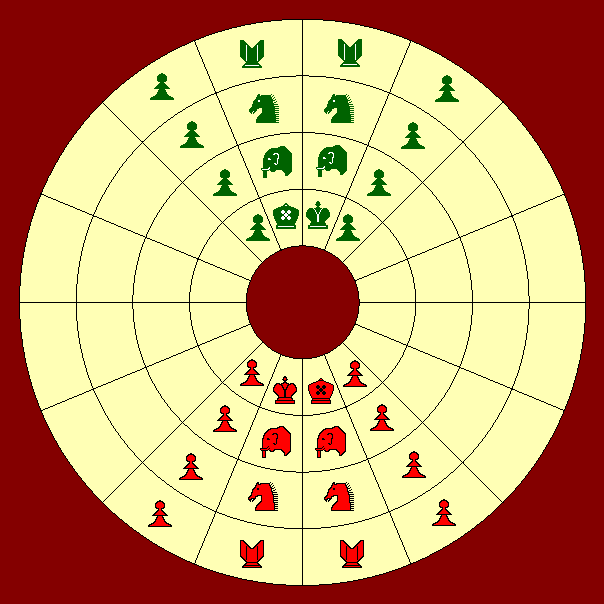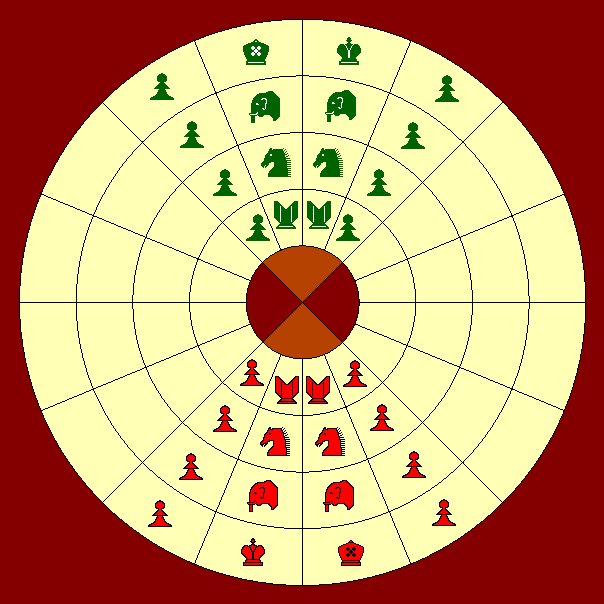Byzantine Chess
According to the historian al-Mas'udi, this Shatranj was named al-Muddawara, Circular Chess, or ar-Rumiya , Byzantine Chess, because it was favoured by Byzantines, Rumiya being an Arabic deformation of Roman. It is said that they were given to Tahir, a famous general, governor of Mesopotamia in the beginning of 9th century.
However, there is no historic confirmation that this game was effectively played in Byzantium. Indeed, this game seems Persian or Arabic. Their authors loved to oppose "Indian" Chess, square, slow and ancient to "Roman" Chess, round, rapid and modern.
This Chess had a very long history. The Persian historian Ibn ‘Arabshah mentioned it at Tamerlane's court, along with Oblong Chess. From this late time comes the Citadel variant whose source is al-Amuli (†1352).
DESCRIPTION:
The board is circular with 64 cells organized in 4 concentric rings. The 16 pieces are those found in regular Shatranj. The Shah and his Counsellor are placed on the inner ring. The Shah wing of one player faces the counsellor wing of the other player.
There is a particular rule about the Pawn: if two Pawns from the same side, turning in opposing directions, end up by being blocked each against other, both are then removed from game by the opponent.

VARIANT:
There is a variant attested in the 14th century where the setup is different. Here, the Shah and the Counsellor are on the outer ring.
In addition, there are 4 citadels (husun), in shape of quarter of circle, in the center. One can obtain a draw if he succeeds to bring his Shah in a citadel (it is supposed, but the rule was not explicitly stating, that it was meant the citadel opposed to his starting sector).

Find Byzantine Chess on Chessvariants.org
OTHER SHATRANJ VARIANTS:
MODERN CIRCULAR CHESS:
The circular board has also been adopted to play modern Chess with. Matched with modern moves (Queen and Bishops) they ressucited at the beginning of 17th century in India and later in Europe. En 1996, the English Dave Reynolds founded the Circular Chess Society which organizes a World Championship since that date.
Some external references:
http://en.wikipedia.org/wiki/Circular_chess
http://www.bcvs.ukf.net/circ.htm






